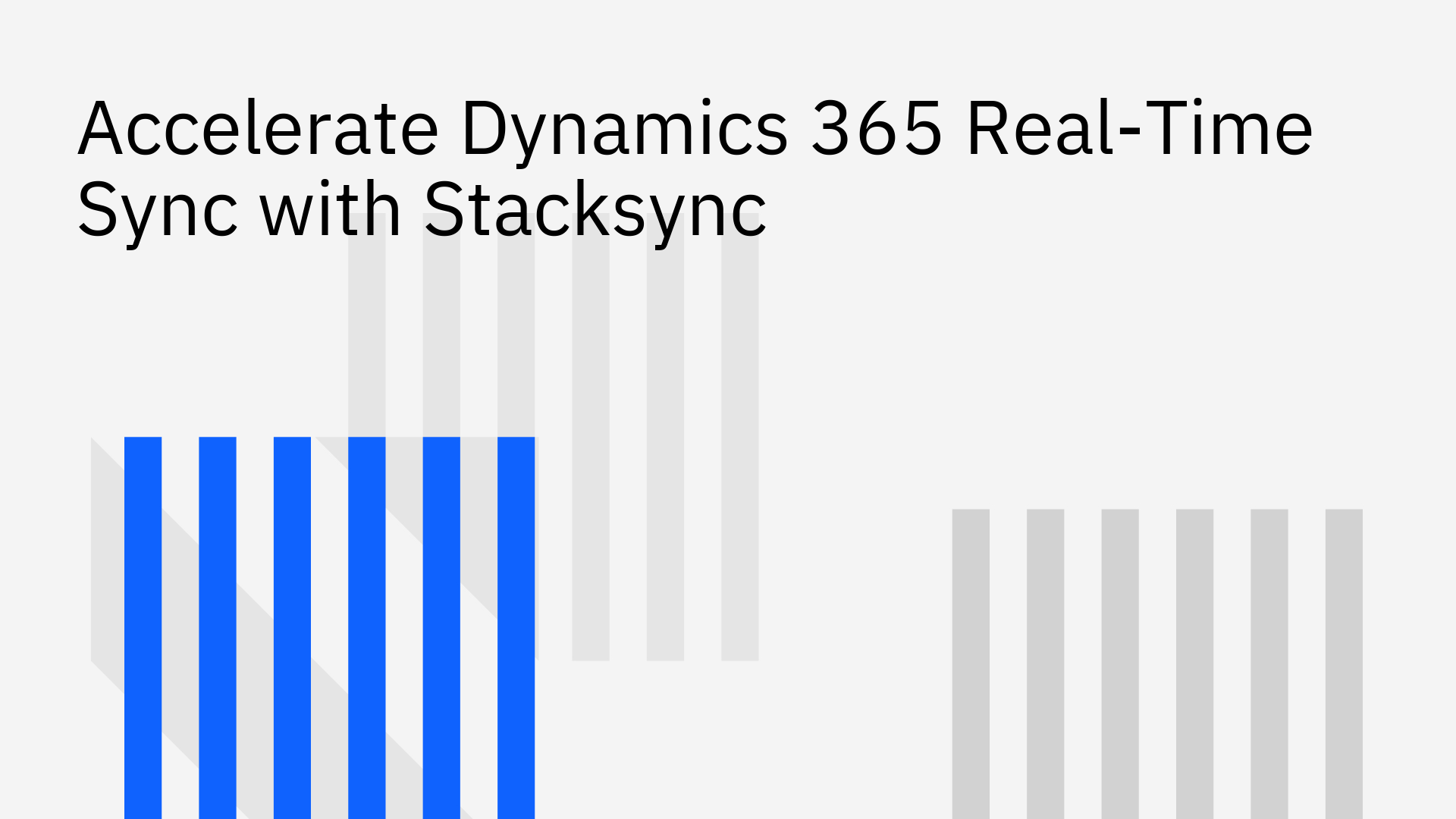
For businesses relying on Microsoft Dynamics 365 for their core operations, data delays are more than an inconvenience they are a direct threat to efficiency and growth. Lag between Dynamics 365 and other critical systems, such as ERPs, databases, or marketing platforms, creates operational friction, leads to poor decision-making based on stale information, and results in a disconnected customer experience. The need for Dynamics 365 real time synchronization is critical for any modern, data-driven organization.
Stacksync provides the definitive solution. Our platform delivers true, bidirectional, real-time synchronization engineered to overcome these challenges, empowering your business to operate with speed and confidence.
While Microsoft provides built-in synchronization tools, they often fall short when mission-critical, real-time performance is non-negotiable. Organizations frequently encounter limitations that lead to data discrepancies and operational bottlenecks.
Common challenges include:
These frustrations are common in technical communities, where users report persistent sync issues between Dynamics 365 modules like Sales and Business Central [3]. Many errors require administrator intervention to resolve, consuming valuable IT resources for what should be an automated process [2]. For mission-critical use cases, native tools simply lack the reliability and real-time performance required.
Real-time data integration is the continuous, instantaneous movement of data between systems. It stands in sharp contrast to traditional batch processing, which moves data in scheduled, periodic chunks [6]. For a business running on Dynamics 365, the benefits of a real-time approach are immediate and transformative:
Stacksync is engineered specifically for high-performance, bidirectional data synchronization. It is designed to overcome the inherent limitations of native D365 sync and generic ETL tools, providing a solution that is fast, scalable, and fundamentally reliable.
For mission-critical applications like order processing or customer support, "near real-time" isn't sufficient. Stacksync synchronizes data in milliseconds, ensuring your operations are never constrained by stale data. This is made possible by an event-driven architecture that processes changes instantly. You can discover more about how our architecture delivers sub-second latency and its impact on your workflows.
Hitting Dynamics 365 API quotas is a major technical pain point that can halt business operations. Stacksync solves this with smart rate limit management. Our platform intelligently batches records and throttles API calls to prevent exceeding service protection limits, even during high-volume data updates. This ensures consistent performance, and you can easily manage API rate limits to align with your specific needs.
Stacksync is built to handle millions of records from day one, scaling effortlessly as your data grows without requiring you to manage any infrastructure. Our true bidirectional sync guarantees data consistency across systems—a change in Dynamics 365 is instantly reflected in your connected database, and vice versa. This eliminates data silos and creates a single source of truth. Explore our real-time sync features for enterprise data consistency to see how we maintain data integrity at scale.
Configuring a robust integration should be simple. With Stacksync's no-code interface, you can set up a real-time sync in minutes. We contrast this ease of use with the difficulty of troubleshooting native sync, which often involves deciphering complex logs for item-level issues [1]. Our issue management dashboard provides clear alerts on any failure, with single-click retries and reverts to minimize downtime and maintain data quality.
Setting up your Dynamics 365 real-time sync is an actionable, four-step process.
Ready to eliminate data lag? Start your 14-day free trial and see the difference true real-time synchronization can make.
Don't let data lag slow your business down. While Dynamics 365 is a powerful platform, its native synchronization capabilities have clear limitations for real-time operational needs. These constraints introduce risk, inefficiency, and a drag on growth.
Stacksync provides a fast, scalable, and easy-to-manage solution for Dynamics 365 real-time synchronization. By delivering true, bidirectional sync with sub-second latency, we empower your teams to operate with confidence on consistently accurate, up-to-the-second data. To learn more, explore our guide on real-time data synchronization best practices.